Repairs – historical buildings, homes and walls
The majority of our work is the high quality repair of historic buildings, homes and walls, particularly those containing cob.
Whilst we mainly work within Devon, we are happy to be involved in work further afield and indeed around the world!
Repairing Cob
Cob is a remarkably durable material provided it is treated correctly. In practice this means keeping it dry. Unfortunately as ordinary Portland cement has taken over from lime in the building trade, largely during the second half of the 20th century builders and home owners have often made the mistake of thinking cement being very strong and waterproof will protect the cob well. Unfortunately the reverse is true, although it will indeed keep off driving rain, it is very brittle and often cracks due to movement in the much more flexible substrate.
These cracks then let in water, which is trapped by the impermeable render. Thus rather than evaporating away when the rain stops, this water builds up in each subsequent storm usually sinking to the bottom of the wall, where in extreme cases it can eventually lead to total failure of the cob i.e. collapse. This in a wall that might have sat quite happily for over four hundred years, prior to the addition of a cement render.
The answer is to stick to either no render at all or a lime putty based render which have been used literally for thousands of years. The same applies internally, either lime, or even better earth plasters, work best.
Most of my work repairing cob buildings over the last thirty plus years has been to strip off cement render, carry out repairs necessary, sometimes replacing existing repairs in a more compatible medium namely cob blocks and an earth / lime mortar. The render or plaster can then be replaced with lime or earth mixes, before being decorated in lime wash.
It is often also necessary to carry out roof structure repairs as roofs often spread forcing the top of walls out causing cracks in the corners of buildings. Another common problem is exterior ground levels being too high, the best answer is simply to lower the level to below the interior floor level and make sure any surface water can easily get away. One thing that I would never recommend is to damp proof inside a cob building. This is again mistaken logic, what must be done is to let the water out with breathable lime or earth plasters inside the building and again lime wash finish is best, although there are other breathable finishes available. The net result is a dry wall and a comfortable, healthy, breathing home.
A cob house in a good state of repair should never be damp. In practice it is not possible to get cob too dry and there is no problem (other than the initial shrinkage of the building drying out if it has been damp) with central heating a cob building.
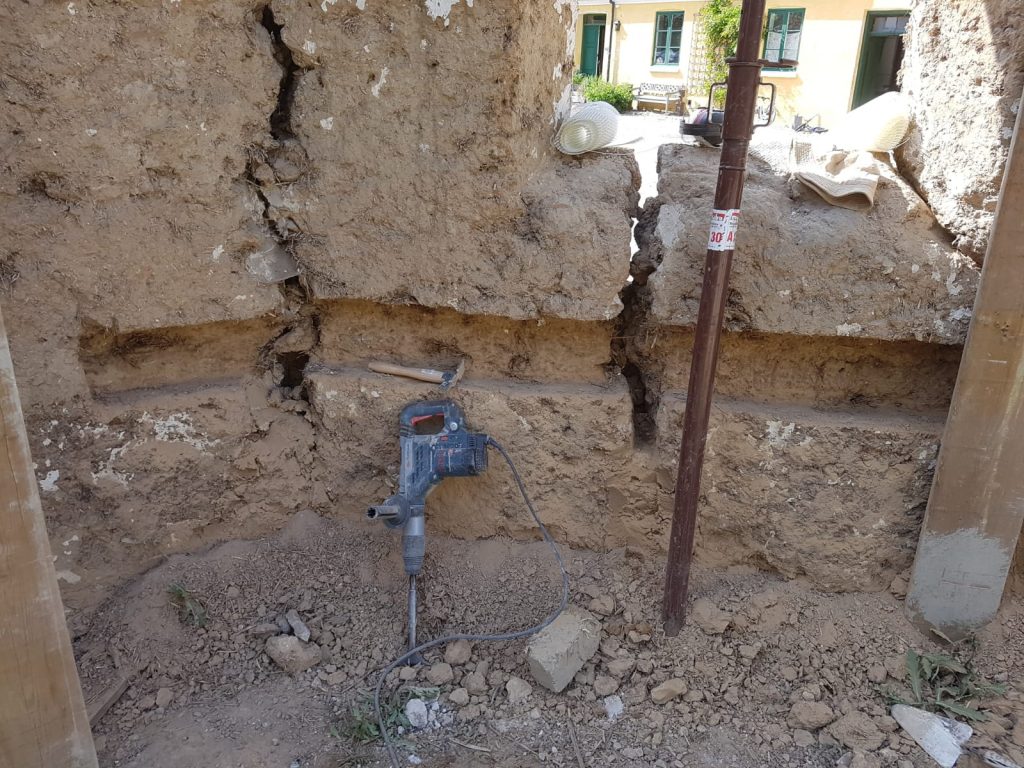
Digging out for cob stitch 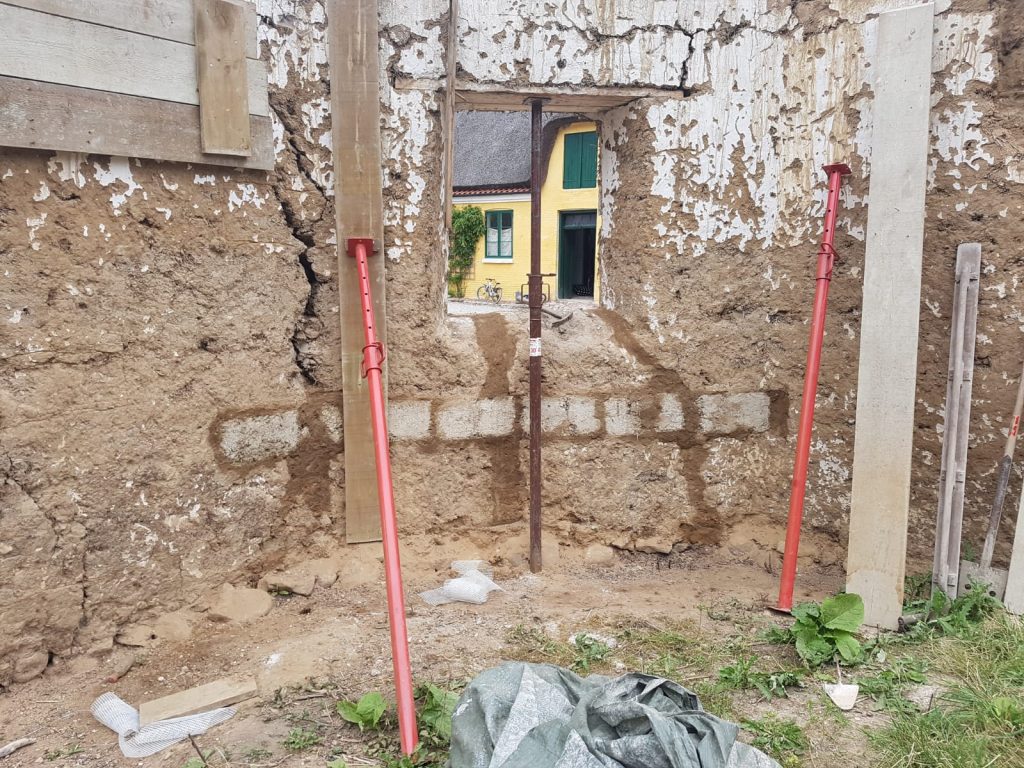
Cob blocks over reinforcement 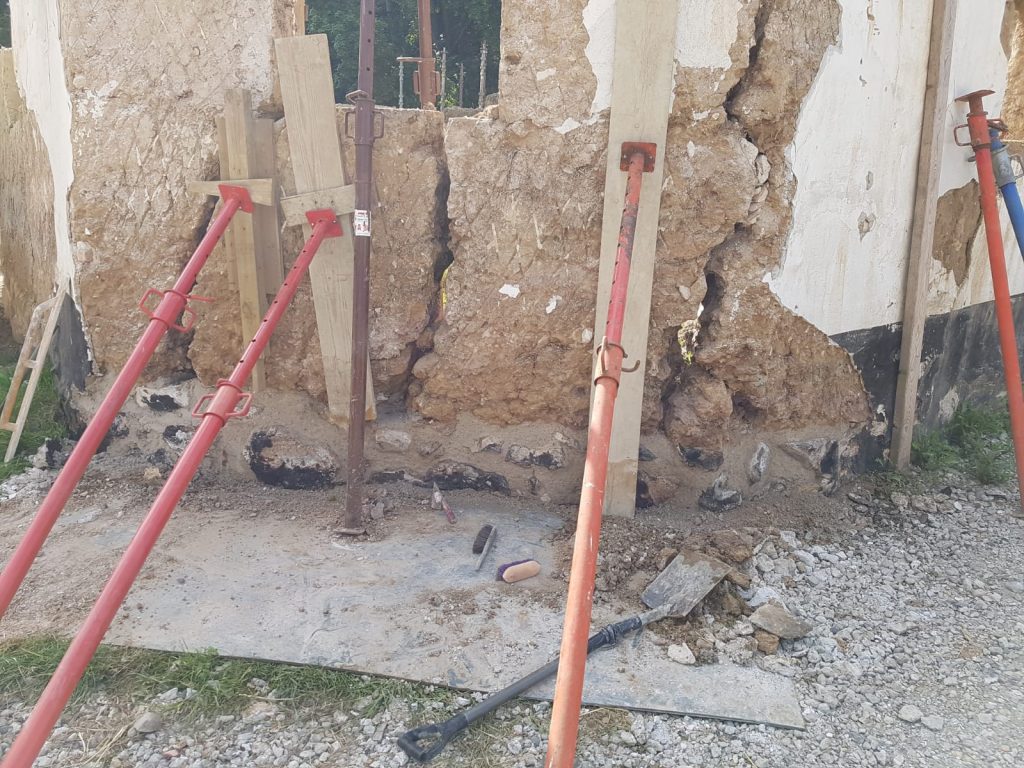
Important propping and shoring 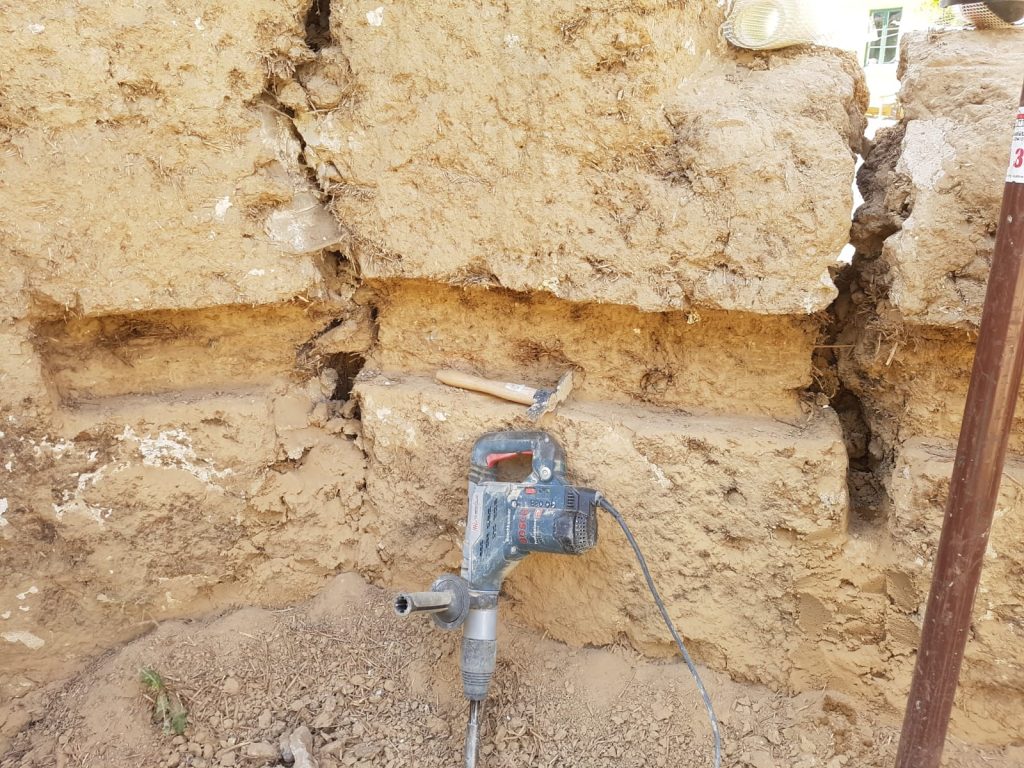
Another stitch on the internal face 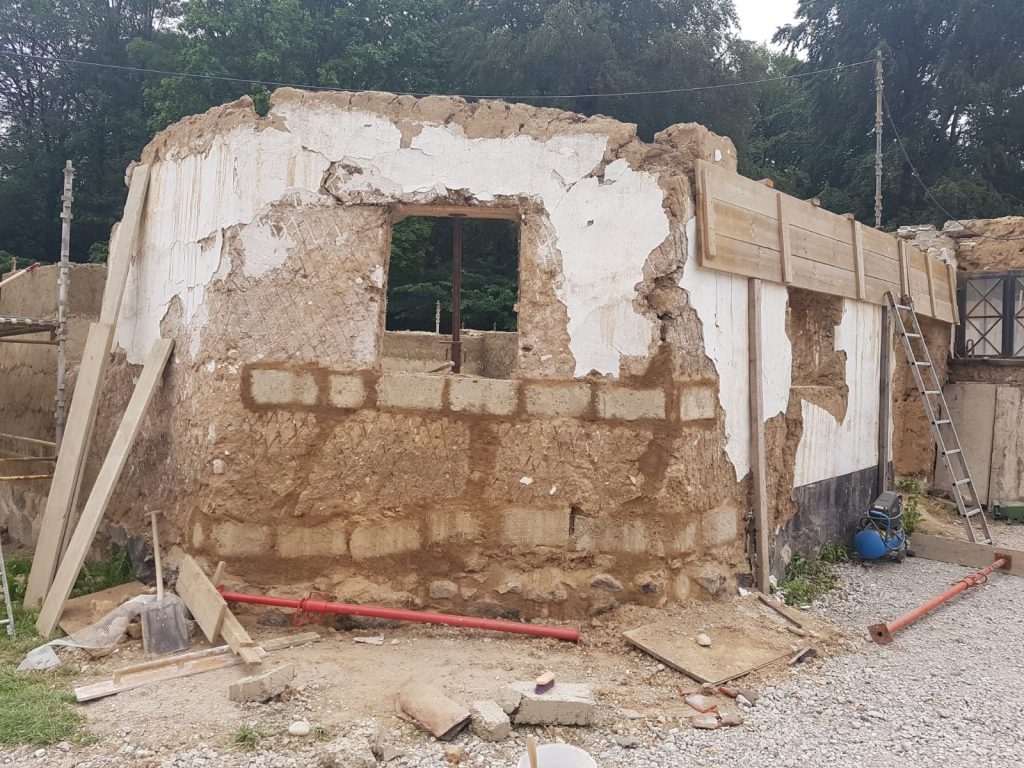
Wall saved!

